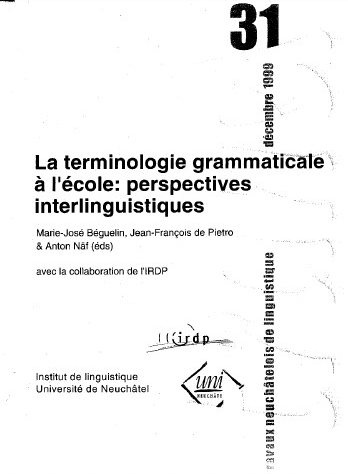La diversité des langues: un outil pour mieux comprendre la grammaire?
DOI :
https://doi.org/10.26034/tranel.1999.2676Résumé
Approaches such as Language Awareness, which appeared in Great Britain in the 1980’s, are now being developed in many countries. This approach suggests a new way of viewing considerations about language (links between spoken and written language, relations between languages, the working of languages and of other communication systems...), while integrating all languages existing in a school class: classroom language, other languages taught, immigrant languages.
Linguistic variety is far from being an obstacle to teaching. It is justified and it becomes a major subject in class as well as a source of students’ elaboration of language knowledge and the source of a widened language culture. Linguistic variety is also a starting point of the development of metalinguistic abilities useful to learning processes and of a new viewing of stereotypes and prejudices often observed against linguistic differences.
The author first remarks on the present situation of teaching, then he points out possible contributions of such processes to the field of grammar. He mainly discusses issues concerning the notion of gender and he puts forward a few activities that can be conducted with pupils of different school grades. In conclusion, he tries and shows how proposals suggested in such a frame work can fit into a curriculum (following a project developed in the French part of Switzerland) and he develops some arguments for a widened concept of grammar from a linguistic point of view.


